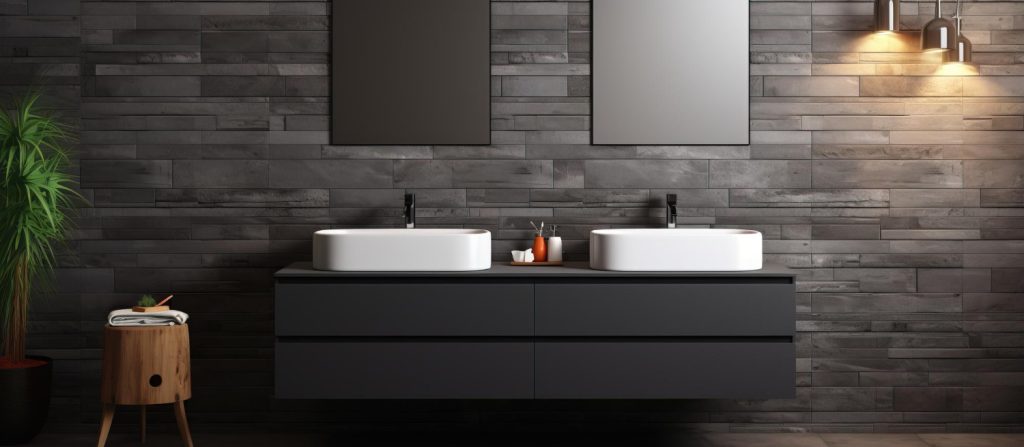A well-executed bathroom remodel can make your daily routine more enjoyable, your home more comfortable, and even increase the value of your property. But where do you start? Whether you’re working with a small space, planning for aging in place, or just upgrading old fixtures, these seven research-backed tips will help guide you through the process with confidence.

1. Define Your Remodeling Goals
Before picking out tiles or vanities, take a step back and ask yourself: Why am I remodeling this bathroom?
- Do you need to fix water damage or outdated plumbing?
- Are you trying to make better use of a small space?
- Is this for personal comfort, resale value, or accessibility?
Defining your goals early helps you make better design choices and keeps your budget on track.
2. Plan a Layout That Works
A functional bathroom starts with a thoughtful layout. This is especially important in small bathrooms, where every centimeter counts.
Tips for smart layout planning:
| Consideration | Recommended Standard |
|---|---|
| Turning radius | Minimum 1.5 m for wheelchair users |
| Door width | Minimum 0.9 m for accessibility |
| Vanity clearance | At least 75 cm in front |
| Shower entry | Zero-threshold (curbless) recommended |
If you’re remodeling for seniors or future accessibility, include grab bars near the toilet and shower, and consider a wider door frame.
3. Prioritize Safety & Accessibility
Making your bathroom safer doesn’t mean sacrificing style. In fact, many safety upgrades blend seamlessly into modern designs.
Key safety features to include:
- Curbless showers: Easier to enter and safer for all ages.
- Grab bars: Install near the toilet, bath, and shower.
- Shower benches: Useful for older adults or those with mobility issues.
- Non-slip flooring: Choose tiles with textured surfaces.
- Comfort-height toilet: Higher than standard models, easier on the knees.
These features are especially important for people who want to stay in their homes long-term, also known as “aging in place.”
4. Choose Materials That Last
The bathroom is a high-moisture environment. To avoid future repairs, choose materials designed for durability and water resistance.
Recommended materials:
| Surface Area | Recommended Materials |
|---|---|
| Flooring | Porcelain tile, textured vinyl planks |
| Wall surfaces | Acrylic panels, glazed ceramic tiles |
| Vanity top | Quartz, engineered stone |
| Paint | Mould-resistant bathroom-grade paint |
These choices not only last longer but also make cleaning easier and reduce maintenance over time.
5. Improve Ventilation & Lighting
A bathroom remodel is the perfect time to fix poor ventilation or lighting—two common problems in older homes.
What to include:
- Extractor fan with humidity sensor: Automatically removes moisture.
- Layered lighting: Use a mix of ceiling lights, task lights (e.g., near the mirror), and ambient lighting.
- Natural light: If possible, install or enlarge a window or use frosted glass for privacy.
Proper airflow and lighting reduce mould growth and create a brighter, more pleasant space.
6. Add Smart Storage & Efficient Fixtures
Well-designed storage can make even a small bathroom feel organized and clutter-free.
Space-saving storage ideas:
- Wall-hung vanities with drawers instead of cabinets
- Built-in shelves or niches in the shower
- Tall, narrow cabinets for vertical storage
- Hooks instead of towel bars to save wall space
Also consider installing water-efficient fixtures like dual-flush toilets and low-flow shower heads, which can help you save on water bills and are better for the environment.
7. Hire the Right Professionals
While DIY is tempting, a bathroom remodel often involves plumbing, waterproofing, and electrical work—all of which require skill and local code knowledge.
Why hire licensed experts:
- They know New Zealand building regulations and can handle consent applications if needed.
- They can suggest smart solutions you may not have thought of.
- Their work is usually covered by warranty or insurance.
If you’re based in Auckland, a trusted local contractor like QK bathroom renovation in auckland can help you avoid common mistakes and ensure the job is done right the first time.
✅ Bathroom Remodel Checklist
| Task | Checklist Item |
|---|---|
| Set goals | Function, safety, resale, style |
| Plan layout | Measure clearance, plan fixtures |
| Add safety features | Grab bars, non-slip floors, curbless shower |
| Pick durable materials | Water-resistant, easy to clean |
| Ventilation & lighting | Fan, task lighting, natural light |
| Smart storage | Floating vanity, niches, vertical cabinets |
| Hire professionals | Get 2–3 quotes, check licenses & reviews |
📚 References
- Wang, Y., & Zhao, C. (2017). A fuzzy-AHP based layout design approach for elderly-friendly bathrooms. Disability and Rehabilitation: Assistive Technology.
- Michalek, J., Choudhary, R., & Papalambros, P. (2002). Architectural layout design optimization. Engineering Optimization, 34(5), 461–484.
- Chan, A. P. C., Darko, A., Olanipekun, A. O., & Ameyaw, E. E. (2017). Critical barriers to universal design in the construction industry. Journal of Cleaner Production, 160, 543–554.
- Devlin, A. S. (2014). Environmental Psychology and Human Well-Being: Effects of Built and Natural Settings. Academic Press. (Chapter 5: Bathroom Design and User Comfort)
- U.S. Department of Housing and Urban Development (2012). Residential Remodeling and Universal Design.
